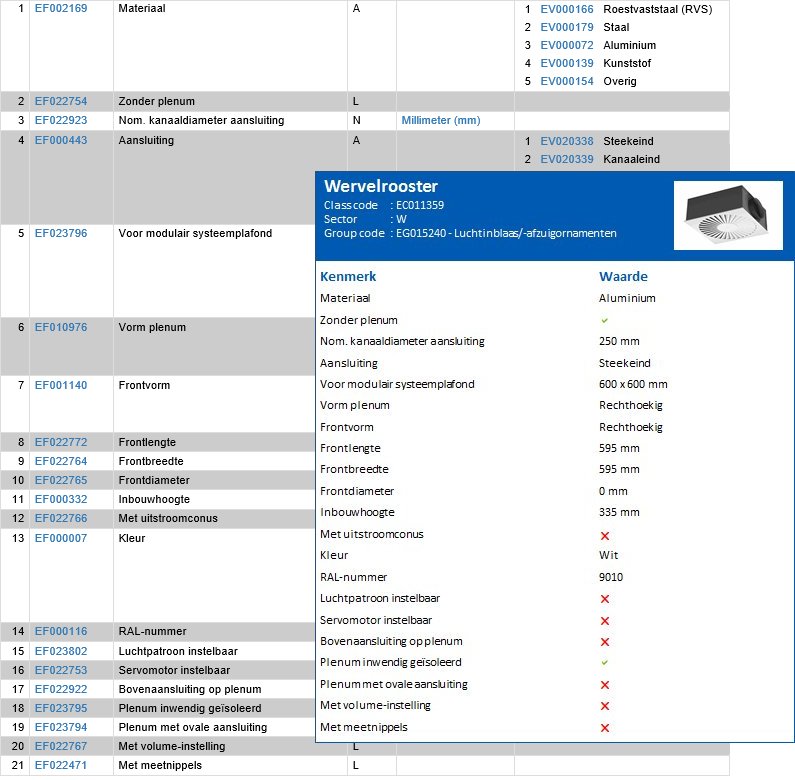Step 5: Filling in technical ETIM Features
Filling in the technical feature values is a labour-intensive step in the ETIM Classification. When the technical features have been filled in according to the classification, the data can be used by wholesalers as a basis for search systems, web shops, catalogue and other commercial communications. In addition, optimum use can be made of your data in all business processes, design, calculation, purchasing and administration of the processors.
A distinction is made between alphanumerical, numerical, range and logical features. For alphanumerical features, there is a choice of fixed possible values such as colour, design, material. Numerical and range features require a numerical value (or range) with some unit, such as length = … mm. A logical feature lets you choose only between yes and no.
Once published, feature values cannot be deleted. If an incorrect feature value is published it can be overwritten with a new mutation or complete publication.
Reason no Value
Since the industry strives for fully completed ETIM Classification (for both product classes and features), a reason can be given if a requested value is missing (MV), not applicable (NA) or unknown (UN). This is called “Reason No Value”.
PIM Software
Your products may not yet be classified according to the ETIM Classification. If your software does not offer functionality in the area of ETIM Classification, we recommend that you look into this with our software partners..
ETIM; always on the move
The ETIM model is continuous in development. Updates from ETIM International are therefore made available in the form of official (biennial) releases. Certain market parties often have to get started quickly with newly announced ETIM classes and/or characteristics, ETIM makes new versions and changes available daily. So in anticipation of the next new official version, we call this ETIM Dynamic.
A dynamic or intermediate ETIM release contains all classes that have already been published or are in “publishing” status. To indicate the differences with the current official ETIM release, new or changed product classes and/or features are marked with a change code. Please note that a dynamic release will still contain the entire official release, including the classes, functions, and values ’tagged’ to be removed in the next official release.
ETIM UP
Especially for manufacturers, Ketenstandaard Bouw en Techniek has developed a tool which data can be easily converted to a newer version of ETIM. The tool takes a lot of (unnecessary) work off your hands and, given classification, ensures higher Data Label.
Thanks to ETIM UP, migrations no longer have to be carried out manually when the ETIM class changes. You upload your old data to ETIM UP and you get the data back in the new version. Updating in ETIM UP takes place on the basis of mapping rules defined by ETIM.






